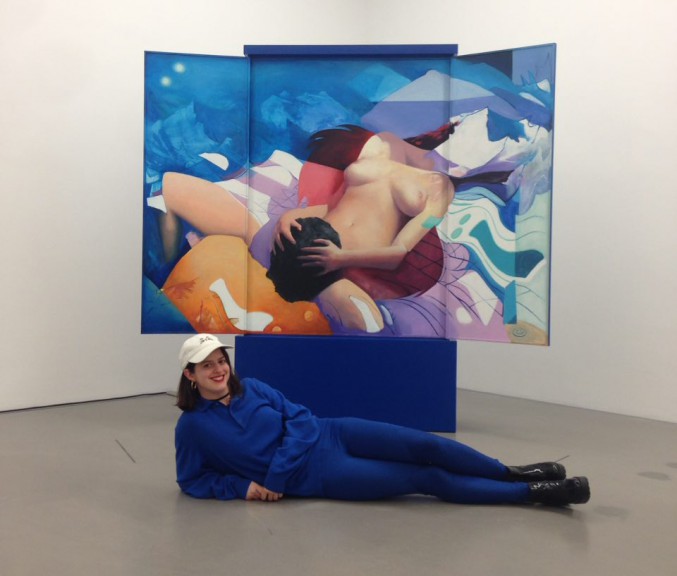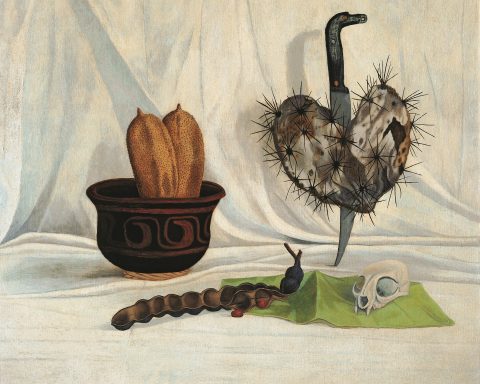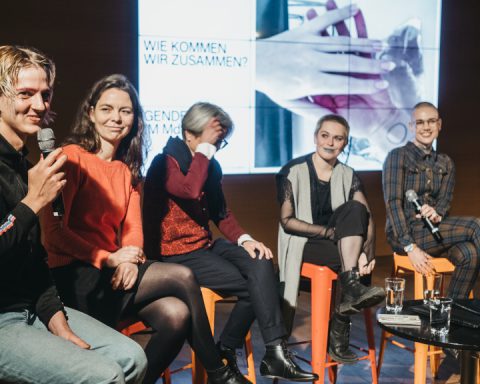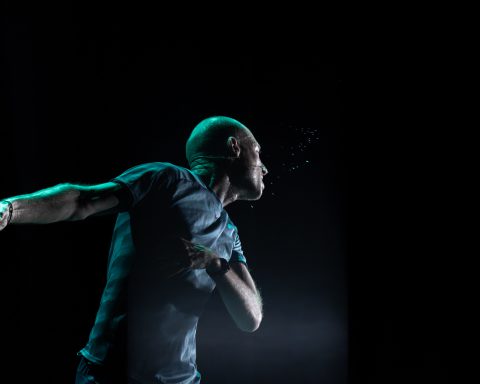Leipzig’s Museum der bildenden Künste (MdbK) continues to make bold statements, having hosted its first female-only exhibition. Approximately 1,000 visitors attended the opening of VOIX, which featured 28 artists from Leipzig and Berlin who belong to the MalerinnenNetzwerk Berlin – Leipzig. MNW was initiated by Kathrin Landa, who studied at HGB. The association was founded in November 2016. Its five-member organisation team consists of Landa, Isabelle Dutoit, Marianna Krueger, Ann-Katrin Schaffner, and Alex Tennigkeit.
Their mission statement:
Within the framework of the initiative of the network of female painters, which aims to create a symbiosis between the capital and the Leipzig scene, the art of painting by women is to be better positioned in the public image – a formulation of objectives that unfortunately still has its justification in view of the existing dominance of men in this sector as well.
In a series of pieces on artists who participated in the show, Croatian curator Tena Bakšaj starts with Zohar Fraiman.
(Intro by Maeshelle West-Davies)
Entering VOIX at MdbK Leipzig, which opened on 20 February, at first I felt a bit overwhelmed by the number of artworks and visitors on the opening night. After a while, one of the artworks struck me immediately by its intensity and its sheer presence of blue color. Moreover, the artist posing in front of her work at that moment was wearing a blue overall in a matching shade.
That was Zohar Fraiman.
After I decided to contact this Berlin-based artist born in Israel, she revealed that was one of her initial intentions: She wanted the visitors (and herself) to be taken over by one color and to sink into it.
“The more intense, the better,” Zohar says. “If you said that I was composing a dictionary of the visual world, the blue would be the font.”
The artworks she presented in the group exhibition mark a turning point in her artistic practice. She describes it as a positive breakdown, a step away from where she came from.

Her art education started at university in Jerusalem at the age of 17, where she studied for 4 years in a painting program that she describes as very strict, traditional and competitive, almost like a ballet school. Coming from a very traditional religious background, at some point she felt the need for a change.
A few months before her final graduation, she packed her suitcases and moved to Berlin.
I pose the question of how long it has been since she moved to Berlin. Today it is ten years and ten days, Zohar immediately relies.
After taking a break, she felt like she needed some structure and decided to finish her education, so she enrolled in the UDK Berlin. She immediately fell in love with her colleagues and the flow of creation, as well as with the atmosphere, which she describes as the exact opposite to the one in Israel.
At the same time, the skills she learned in her former school stay for the rest of her life. As one of her biggest supporters, she mentions Professor Burkhard Held. Somehow, two years of studying turned into four, and from that point on, Berlin became the place where she felt like home for the first time.
So how did Zohar’s artwork evolve to this point?
It always contained a lot of influence from folklore and fairytales, and at the same time she was dealing with topics such as women and sexuality. She explains her works consist of different layers that clash – in the same way as our reality, where common storylines intertwine.
Formerly being described as narrative, recently her work has been hinting at more than telling a story, guiding the viewer into simple statements. Her major altarpiece exhibited in VOIX opens and closes as the visitors enter the room and activate the sensor, but it’s not quite clear how. The artist says:
The viewers are a part of making this happen, but it’s indirect, they don’t know how they are doing it. The more you let go, the more you understand; it’s arbitrary coincidence.
Our conversation becomes even more interesting as she mentions my Croatian descent and explains that her smaller pieces in the exhibition refer to her recent research of the former Yugoslav countries. Her research was triggered by a scandal involving two Swiss football players of ethnic Albanian descent in a game against the Serbian national team, in the FIFA World Cup last summer. She became very interested in the complex multi-identity question in football, and eventually in the former Yugoslavia region.
That leads all the way back to our discussion of multiple realities, and not everything being black and white.
“It’s actually blue,” she states and laughs.
We end our talk returning to our first topic: the female group exhibition in MdbK. Zohar describes her connection to MalerinnenNetzwerk as very suitable, as she had exhibited in Leipzig before and knew some of the members. The reason to form the group was to establish a communal voice and to help the members connect to the wider art scene and audience, as the title itself explains.

“It’s not necessarily a theme that connects everyone in the show,” Zohar concludes. “What might be even more important than the group show itself, is the solidarity among the women and the amount of intellectual and critique exchange that has happened since its formation and continues happening during their regular studio visits.”








![Wine & Paint event on 9 Nov. 2024 at Felix Restaurant, Leipzig. Photo: Florian Reime (@reime.visuals] / Wine & Paint Leipzig](https://leipglo.com/wp-content/uploads/2024/12/pixelcut-export-e1733056018933-480x384.jpeg)

